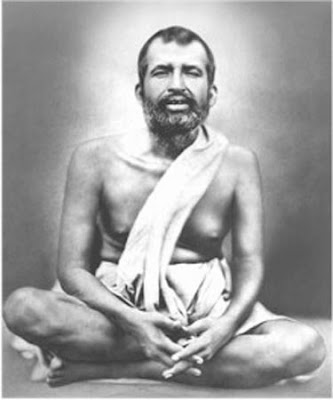The Gospel of Sri Ramakrishna : 4.

Swami Sri Ramakrishna Paramahamsa The Gospel of Sri Ramakrishna : 4. BREAD-WINNING EDUCATION : The anguish of the inner soul of India found expression through these passionate words of the young Gadadhar. For what did his unsophisticated eyes see around him in Calcutta, at that time the metropolis of India and the centre of modem culture and learning? Greed and lust held sway in the higher levels of society, and the occasional religious practices were merely outer forms from which the soul had long ago departed. Gadadhar had never seen anything like this at Kamarpukur among the simple and pious villagers. The sadhus and wandering monks whom he had served in his boyhood had revealed to him an altogether different India. He had been impressed by their devotion and purity, their self-control and renunciation. He had learnt from them and from hi...
.jpg)
.jpg)




